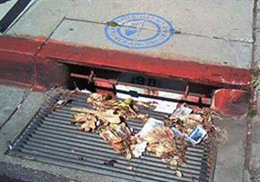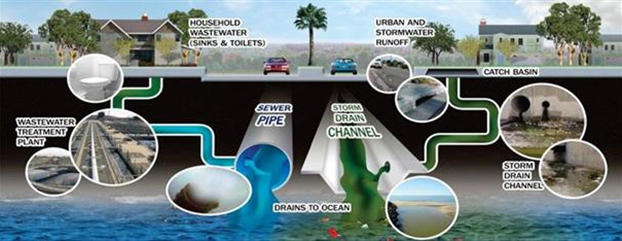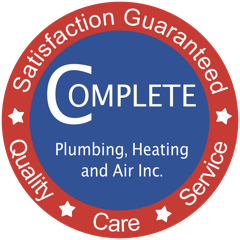HISTORY OF ORANGE
The City of Orange was incorporated on April 6, 1888, under the general laws of the State of California, however, Orange dates back to 1869 when Alfred Chapman and Andrew Glassell, both lawyers, accepted 1,385 acres of land from the Rancho Santiago de Santa Ana as legal fees.
Historic Plaza
Soon thereafter, the men laid out a one square mile town with ten-acre farm lots surrounding a forty-acre central townsite. The center of the townsite became known as the Plaza, which has become the symbol of the city.
Today, the Plaza and the majority of the original one square mile town site, contain many homes and buildings dating to the early days of the City; the site is registered on the National Register of Historic Places.

The City of Orange, with a population of 138,640 is situated in Central Orange County, approximately 32 miles southeast of Los Angeles. The City’s land area is 27 square miles. The City’s planning area is 38 square miles, with a “Sphere of Influence” area of 55 square miles. Included in the City’s Sphere of Influence is 18,500 acres of undeveloped land owned by The Irvine Company.
Under a council-manager form of government, a mayor is elected every two years and four council members are elected to four-year terms alternating on a two-year basis. The City Manager, who is the administrative office of the City, is appointed by the City Council.
WHERE DOES ORANGE CITY WATER COME FROM?
Orange’s water comes from three sources. The primary source is groundwater drawn from 12 municipal wells drilled about 1000 feet into the Santa Ana River Aquifer. Well, water goes directly into the distribution system, is disinfected with chlorine and meets all state regulations. The second source is water imported by the Metropolitan Water District, from the Colorado River and from northern California (San Francisco-San Joaquin Bay-Delta). Metropolitan water is filtered and disinfected with chloramines. Orange also purchases a small amount of water from the Serrano Water District. This source is primarily treated surface water but also includes local treated well water.
ARE THERE CONTAMINANTS IN ORANGE CITY WATER?
The sources of drinking water (both tap water and bottled water) include rivers, lakes, streams, ponds, reservoirs, springs and wells. As water travels over the surface of the land or through the layers of the ground it dissolves naturally-occurring minerals and, in some cases, radioactive material, and can pick up substances resulting from the presence of animal and human activity.
Contaminants that may be present in source water include:
Pesticides and herbicides, which may come from a variety of sources such as agriculture, urban stormwater runoff, and residential uses.
Microbial contaminants, such as viruses and bacteria, which may come from sewage treatment
plants, septic systems, agricultural livestock operations, and wildlife.
Radioactive contaminants, which can be naturally occurring or be the result of oil and gas production or mining activities.
Inorganic contaminants, such as salts and metals, which can be naturally occurring or result from urban storm runoff, industrial or domestic wastewater discharges, oil and gas production, mining and farming.
Organic chemical contaminants, including synthetic and volatile organic chemicals, which are by-products of industrial processes and petroleum production, and can also come from gasoline stations, urban stormwater runoff, agricultural application, and septic systems
SHOULD I DRINK AND BATHE WITH ORANGE CITY WATER STRAIGHT FROM MY FAUCET?
Some people may be more vulnerable to contaminants in drinking water than the general population. Immuno-compromised people, such as those with cancer who are undergoing chemotherapy, persons who have had organ transplants, people with HIV/AIDS or other immune system disorders, some elderly persons and infants can be particularly at risk from infections. These people should seek advice about drinking water from their health care providers.
The USEPA and the federal Centers for Disease Control guidelines on appropriate means to lessen the risk of infection by Cryptosporidium and other microbial contaminants are available from USEPA’s Safe Drinking Water Hotline at (800) 426-4791 between 10 a.m. and 4 p.m. Eastern Time (7 a.m. to 1 p.m. in California)- source: 2018 Orange consumer confidence report.
https://www.cityoforange.org/DocumentCenter/View/6916/Consumer-Confidence-Report-2018?bidId=
Complete Plumbing recommends installing a Catalytic Carbon Whole house water filtration system by Aqualistic Water Products to remove most of the harmful chemicals in your city water, leaving you with bottled quality water at every faucet in your home.
ORANGE PLUMBING TIPS
Fix leaky faucets. For every leak stopped, you can save 20 gallons of water per day.
Develop a watering schedule for your irrigation system. To learn more, visit www.bewaterwise.com/calculator.html.
Use native plants in your landscaping. Planting and maintaining beautiful California native and water-friendly plants can save between 1,000 and 1,800 gallons per month.
Install a high-efficiency toilet or clothes washer. A temporary rebate program is still available. Other rebates are also available for sprinklers and artificial turf. To learn more, visitwww.ocwatersmart.com.
MWDSC has its own water conservation website. To find out more information on water-saving plants and other useful tips, visit www.bewaterwise.com.
ORANGE RESIDENTS should make sure that their plumbing systems are in good working order and are leak-free. This is important, not only for saving money on your water bill and limiting damages to property, but it is our responsibility to provide clean fresh water for future generations.
DID YOU KNOW?
Water Leaks:
- Nationwide, more than 1 trillion gallons of water are lost annually due to household leaks. That’s equal to the annual water use of more than 11 million homes.
- The average household can waste more than 10,000 gallons each year due to correctable leaks. That’s enough to wash 270 loads of laundry!
- Ten percent of homes have leaks that waste 90 gallons or more per day! Common sources include toilets, faucets, showerheads, and landscape irrigation. But you should also consider less obvious sources of leaks: water heaters, ice makers, dishwashers, and filtration systems. Many of these are easily correctable, and fixing them can save about 10 percent on the average water bill.
- Be sure to check your toilet for leaks at least once a year. Put food coloring in the tank. If it seeps into the bowl without flushing, there’s a leak. And if your toilet flapper doesn’t close properly after flushing, replace it.
- Remember, one drip a second adds up to five gallons lost per day!
So regularly check your faucets and showerheads, as well as all hoses and connectors. - Many household leaks can be solved with simple tools and a little education — and fortunately, Do-It-Yourselfers have access to multiple resources. But even if you must pay for repairs, you will still save money in the long run. For more information on water conservation, visit ocwatersmart.com.
- Complete plumbing provides leak detection of even the smallest amount of water which could prevent costly water bills and possible damage due to water leaks
- Complete plumbing utilizes automatic water shut off valves that detect leaks, automatically shuts off the water to your home then sends you an alert via a smartphone app. You can turn the water on and off, monitor water usage and temperature right from your phone!
ORANGE SEWER DRAINAGE SYSTEM
The City of Orange maintains over 1.6 million lineal feet or 308 miles of sewer pipeline. Provides information regarding sewer systems and sewer lateral connections. Maintenance includes annual cleaning of sewer lines and periodic videotaping to search for trouble spots. Keeping the sewer system clean helps limit potential sewage overflows that could threaten our health and water quality. For information about the City’s sanitation rates, view the Sanitation Rates (PDF). For additional information about the City’s most recent sewer rate study, view Comprehensive Sanitation Rate Study (PDF).
Sewer Lateral Connections
A sewer line from private property is connected to the public sewer main on the street by means of a sewer lateral. Each property is connected to the sewer main with a separate sewer lateral. The sewer lateral is the section of the sewer pipeline running roughly perpendicular from the private property to the sewer main on the street. The construction and maintenance of the sewer lateral is the responsibility of the private property owner
- Most Orange homes have just one main sewer pipe that connects the sewer system from their house to the city’s main sewer system. Homeowners are required to maintain that sewer pipe up to and including the middle of the street and may be responsible for repair costs should a problem occur.
- Complete Plumbing has the capability to use a sewer drain camera and location device to inspect sewer lines for breaks, cracks root intrusions. This simple examination of your sewer system may save thousands of dollars in repair costs.

Stormwater is water from rain that does not soak into the ground. It flows over paved areas like streets, sidewalks, and parking lots, as well as roofs and sloped lawns. As it flows, the stormwater collects and carries pollutants such as litter, pet waste, pesticides, fertilizers, and motor oil. This “toxic soup” then flows through a massive system of pipes and channels directly into our local waterways and the ocean.
What is the difference between the storm drain system and the sanitary sewer system?
The storm drain system and sanitary sewer system are both large conveyance systems of underground pipes. This leads to the misconception that the systems are one and the same. They are in fact separated and serve different purposes.
The sanitary sewer system transports domestic sewage to a treatment plant. Domestic sewage includes wastewater from household and commercial plumbing, such as toilets, showers, and sinks. There, contaminants are removed from the sewage through a multi-stage process, which includes settling, filtering, and biological and chemical treatment. The treated water is then discharged into local waterways or used as reclaimed water.
The storm drain system, on the other hand, was designed to prevent cities from flooding. Its purpose is to quickly transport rain runoff (stormwater) away from the city and into the nearest waterway, without treatment. And so, any pollution carried by stormwater also enters our waterways untreated.

We have been serving Orange Residents for over 30 years and know a lot about Orangewater filtration systems, Orange Plumbing Systems, Orange heating, and air conditioning systems, Orange tankless water heaters Orange drain cleaning
Call and ask about our Orange residents specials
READY TO GET STARTED?